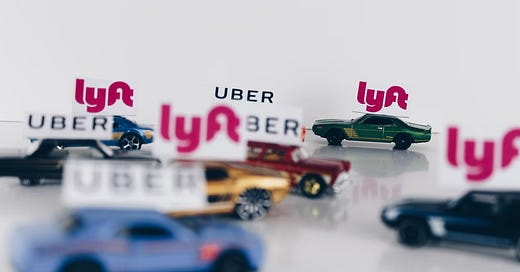In America, the duopoly — the Republican and Democratic parties which dominate politics — is ripe for disruption. Dissatisfaction reached record highs as Joe Biden took the oath of office in January 2021, with 50% of Americans identifying as independents and just 25% identifying with each of the major parties. Yet these political parties remain entrenched in Congress, with no serious competition emerging to meet demand. What then must we do?

A frontal assault on the party structure is the most obvious strategy, but it has failed repeatedly during their 160 years of control. The political landscape is littered with the corpses of insurgent parties which have challenged the duopoly directly. It is a near impossible task. State by state, the duopoly writes the election rules, and achieving ballot access only reveals a new hurdle; the immense amounts of money required for candidates to compete.
In her book The Politics Industry, Katherine Gehl identified the electoral process as the premier roadblock to defeating the duopoly. Her innovation, Final-Five Voting, would weaken the bonds of party loyalty and offer increased viability to minor parties, and former Presidential candidate Andrew Yang recently launched a new party focused on implementing it. However, the underlying strategy of reforming voting methods on the state level suffers from the same fatal flaw as a direct attack; Congress controls Federal election law. Article I, section 4, of the Constitution gives them the authority “at any time” to override state voting reforms and protect the duopoly’s interests.
Instead of trying to attack them, a 21st century strategy is to disrupt them into irrelevance. Congress is the legislative branch of government, gatekeepers of the path to putting legislation on the President’s desk. During the 20th century, access to that specific function was largely limited to those within Washington, and the accompanying institutional and procedural knowledge contained within the Capitol Building. In the digital age, that same information is widely available, creating the opportunity to crowdsource the legislative functions of government.
Crowdsourcing has demonstrated its viability in the 21st century in a variety of fields. Wikipedia didn’t hire an office building full of writers; they leaned into the innate desire of human beings to build, cooperate, and create. When Uber sought to disrupt the taxi industry, they didn’t start by buying a huge fleet of vehicles to compete head on. Instead, they identified what their customers really wanted — transportation — and connected them to sellers who had an existing ability to meet that demand. Similarly, Airbnb didn’t build giant hotels full of new rooms to disrupt their competitors; they focused on utilizing existing capacity.
An American Union of swing voters can disrupt the duopoly with a two-pronged approach. First, the legislative deficiencies of current system can be addressed by crowdsourcing solutions for the problems facing America. For the 2022 midterms, a 207-page legislative package has been compiled, and the 50+ policies within are summed up as “End poverty, end mass incarceration, end the endless wars.” By drafting legislation by the people and for the people, the American Union sidesteps the corporate influence that earns Washington DC its reputation as a swamp.
Second, an American Union of swing voters doesn’t need to build a new (and expensive) party structure, since its goal is not to seek elected office, but to put specific legislative solutions on the President’s desk. Rather than creating a fleet of candidates, an American Union of swing voters can connect their customers—concerned citizens looking to cut through the gridlock in Washington—with incumbents who have an existing ability to meet that demand. As swing voters, members of the American Union are willing to give contract extensions to both Republicans and Democrats who advance the legislative package prior to the midterms. Of course, should the incumbents refuse to act, those votes can then swing to their major party challengers.
Simple math demonstrates the efficacy of the strategy. In order for a third party candidate to win, they must receive 35% of the vote in a general election. However, a block of swing voters one-tenth that size — 3.5% — can control the outcome of dozens and dozens of Federal races across the country, determining the balance of power in Congress after the midterms. With a national message that is independent of any specific candidates, an American Union offers a positive post-pandemic pitch for all voters; ignore the divisive duopoly rhetoric in favor of supporting specific solutions. By ignoring the WHO and focusing on the WHAT, an American Union of swing voters can disrupt 21st century politics.
Learn more at AnAmericanUnion.com.
How many of the 50+ policies in the legislative package do you support? Take the quiz.


